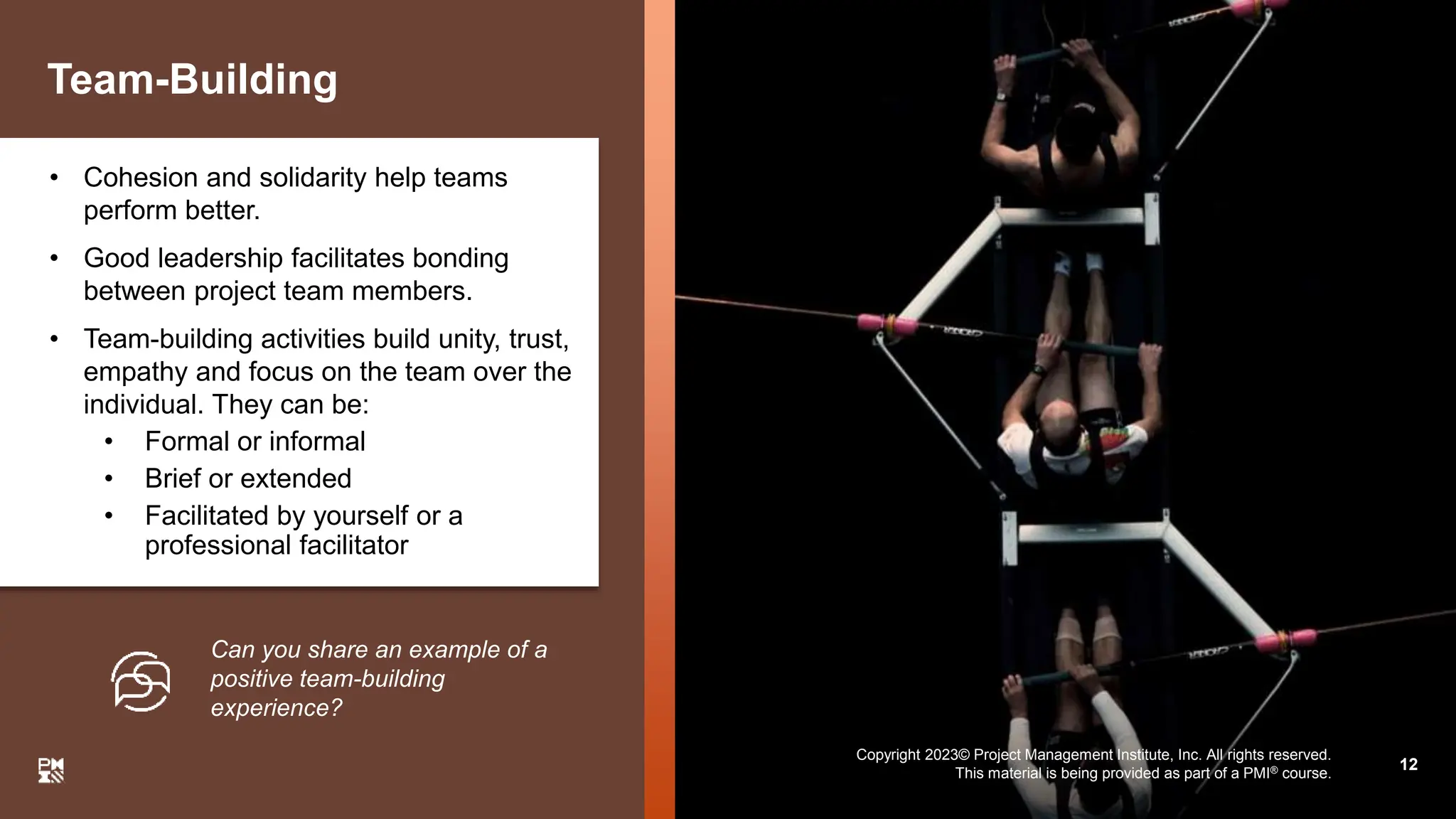The document outlines essential leadership skills and techniques for project management, emphasizing the importance of collaboration, communication, and team empowerment. It discusses leadership styles and competencies, strategies for managing virtual teams, and the significance of emotional intelligence and psychological safety in fostering effective team dynamics. Additionally, it provides guidance on artifact management and the need for inclusivity in team environments.





























![Copyright 2023© Project Management Institute, Inc. All rights reserved.
This material is being provided as part of a PMI® course.
Empower Teams with EI and Fluid Communication
30
In 2016, “After years of analysing interviews and
data from more than 100 teams, [Google
researchers] found that the drivers of effective
team performance are the group’s average level
of emotional intelligence and a high degree of
communication between members.”](https://image.slidesharecdn.com/lesson4leadtheprojectteampmpauthexamprep-240210150445-13379228/75/Lesson-4-_-LEAD-THE-PROJECT-TEAM-_-PMP-Auth-Exam-Prep-pptx-30-2048.jpg)


































































